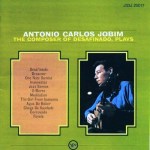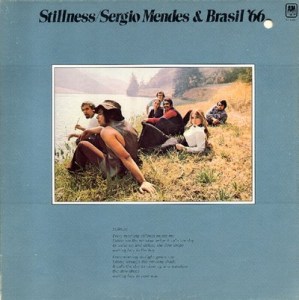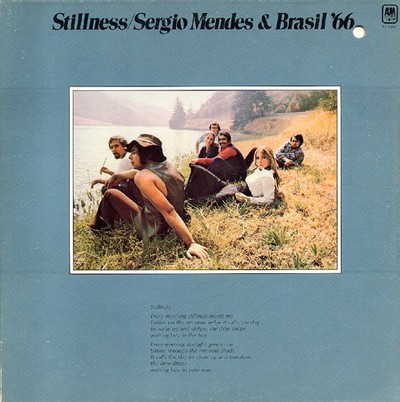 More of the Music of Sergio Mendes and Brasil ’66
More of the Music of Sergio Mendes and Brasil ’66
Reviews and Commentaries for the Music of Sergio Mendes and Brasil ’66
Soren has some questions about shootouts and our White Hot Stamper pressing of Stillness. His questions are indented, our answers are not.
Tom,
Does it ever bug you to realize, maybe one or two years down the road and with (as Tom mentions) better playback/cleaning technology, that stampers which you dismissed in a shootout turn out to win the next one, meaning that you could have let many possible hot stampers go?
Soren,
We talk about that a bit here: Which is better: Phil DeLancie digital or George Horn analog?
But being bugged by it does no good. It is a reality that must be accepted.
Because we know how easy it is to be wrong, or, more precisely, to not know everything we would like to know, we never stop doing research and development for the titles we sell.
We tell people all the time, go play your heavy vinyls and half-speeds that you haven’t played recently. If you’ve made improvements to your system, they will often start to show themselves to be not as good sounding as you remember, and that means you are making progress.
I was actually reaching out to you to inquire whether the super hot Sergio Mendes Stillness that I bought from you a couple of years ago is the version with the phase reversed on side 2?
I ask because I don’t recall a phase issue on this specific title was ever mentioned on your site back when I bought it (i would have remembered, I think) so maybe you only found out recently?
Side 1 on the record sounds better to me than side 2. The matrix on this side 2 ends in “M3”.
Both M2 and M3 are in correct polarity. M3 used to win shootouts by the way. For the longest time, at least ten years, I thought M3 was the ultimate side two.
Having done many, many shootouts since then, along with making many changes to everything involving the cleaning and playing of records, we believe Super Hot (2+) is about the highest grade any M stamper can earn.
The fact that you like an M2 pressing better than the Hot Stamper you bought from us is not a polarity issue. It is most probably a system-dependent issue.
Your stereo is different from ours. Our stereo probably would prefer the M3 we sent you, and your stereo likes the M2 you have. It’s really not much more complicated than that.
Finally concerning this magic Stillness white hot stamper (and don’t worry, I am not going to ask you which one it is because you wouldn’t tell me, and you shouldn’t, because it’s a trade secret that you worked hard for and besides I am probably better off with my own super hot copy where I don’t have to bother about that phase issue on side 2).
But out of curiosity: Has this “magic” stamper/pressing turned out to be great on other Sergio Mendes records also (and thereby defied your previous knowledge and caused you to evaluate your game on those titles also), or was it simply a magical one-off revelation with Stilness?
Part of the reason we were wrong about Stillness is that the best copies broke the rule we tend to use about stampers for A&M albums. In this case, the “wrong” stampers turned out to be the best! The stampers we tend to like for most A&M records, the “right stampers,” are not the ones that currently win shootouts.
But that’s what shootouts are for, so that we take our biases and previous judgments out of the search and just go with what actually does sound the best.
Haha!
How beautiful actually, that the “wrong” stampers turned out to be the best on this one title. Records are nice that way. You must always keep on your toes. Thank you for taking the time to answer my three questions.
Best regards,
Søren
Soren,
Staying on your toes is indeed the name of the game when it comes to records. With every change to your system, the record you used to like the best could turn out to be second-rate compared to the record you used to think was second-rate but is now first-rate.
This, of course, drives most audiophiles crazy, so they ignore or downplay the possibility.
Being in the shootout business means we have no way to avoid these realities, which is why it is so easy for us to accept them.
The amateurs and professionals alike who review records for audiophiles want there to be clear-cut answers for every album they write about. Uncertainty and trade-offs upset them no end.
We recognized twenty years ago that the empirical pursuit of record knowledge, practiced scientifically, must be fundamentally incomplete, imperfect, and provisional, and that is never going to change no matter how upsetting anyone may find it.
Thanks very much for writing.
TP
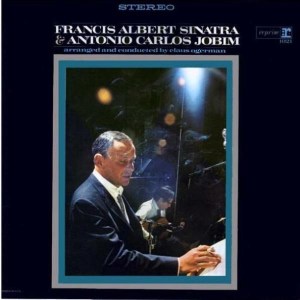
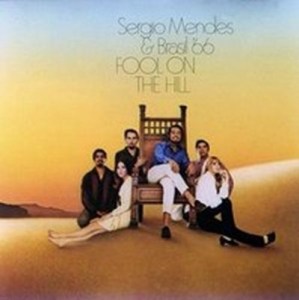

 More of the Music of Antonio Carlos Jobim
More of the Music of Antonio Carlos Jobim

